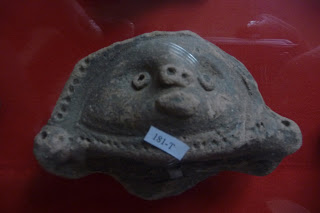
Many times while headed down river, smaller lanches (Brasilian fast boats) or even the larger slow boats would appear seemingly from out of nowhere to deposit or pick up passengers. Thus was the action on this particular morning and watching it was an early morning delight. The unison with which each boat's pilot navigates in parallel is akin to watching water ballet. Each dancer knows his part (yes, it is always a "he") and performs it with the ease of many years practice. Usually along with a passenger or two, other items would be transferred between boats as well. Suitcases, boxes of food, and bundles of household belongings traveled between boats in synchronized fashion while crewmen yelled and whistled instructions. Frequently, if the connecting boat was large enough, vendors would hawk their wares while the two boats collaborated. So it would not be uncommon to see queijo (cheese), pao (bread), or dulce (sweet treats) transacted in the exchange: hands reaching for loved ones, for cheese, for coins or to maintain the delicate space between boats.

After the boats separated and ours resumed its course, I stayed on the deck adjacent to the pilot's cabin. The breeze was pleasant and the boat stayed close enough to the river bank that I could get some good photos. All the while the captain played music, notably at this moment The BeeGees' hit song "Night Fever". Remember that one? If you don't, it means you were born after Jimmy Carter was president. Perhaps it's just me and the incessant flashbacks to my early teen years that hearing this music caused, but there seemed to be some irony on our floating dance machine. "Then I get night fever, night fever. We know how to do it. Gimme that night fever, night fever. We know how to show it."
Imagine that. I am gliding past riverine jungle territory which houses tribes of uncontacted people who have never heard American pop music while listening to the pathetic lyrics of The BeeGees. The juxtaposition of 70s dance music to jungle inhabitants who don't know any kind of night fever except the type borne on insect's wings is rather jarring. Indeed these uncontacted tribes don't know who Lula (the president of Brasil) is, or who Obama (dare I say the new president of the U.S.?) is, or Merrill Lynch, Lehman Brothers, AIG, Tim Geithner, or any other "news maker" in the world right now. And yet, what the news makers make, what the news makers do and how the news makers do it will have a profound impact on the people and the place of Amazonia.
This, then, is my early morning realization. While the Gibb brothers proclaim "Night fever, night fever", the unceasing grind of government policies and corporate practices continue to decimate and destroy the habitat of the most isolated humans on the planet. Meanwhile, people of Amazonia are doing what they have done for millennia: cultivate the land, in order to adapt and negotiate with their environment in pursuit of survival.
What is different now from pre-contact realities is the relationship the people of Amazonia have with outsiders. To ignore the outside is to re-enforce cultural continuity and cultural preservation. Yet ignoring outsiders also points to cultural destruction, as outside forces operate outside the interests of the community in their ceaseless quest for money and power.
The dialectic remains, however, because to engage with the outside also suggests cultural destruction, as evidenced by the exploitation of multinationals like Shell and Cargill on individual farmers. Finally engagement with the outside also, to some extent, serves to protect cultural traditions particularly when local activists hold the line against corporate practices.
This, then, is the tension pushing and pulling on the people of Amazonia, a tension that ebbs and flows like the waters at the bank of the river on which they rely.











 While not as noticeable when on the ground, this view from a rocky outcrop above the jungle canopy vividly displays the ways in which humans manipulate the land to meet human needs. It's this last point that Roosevelt postulates so controversively as a result of her excavation at Pedra Pintada. In a 2000 interview with the
While not as noticeable when on the ground, this view from a rocky outcrop above the jungle canopy vividly displays the ways in which humans manipulate the land to meet human needs. It's this last point that Roosevelt postulates so controversively as a result of her excavation at Pedra Pintada. In a 2000 interview with the 




 Nelsi, our guide, suggested that the image above is a calendar. It contains 51 boxes, which roughly corresponds to weeks of the year. On the rock adjacent to this image is the photo above it, which Nelsi claims depicts 9 planets and a shooting star. The human form to the left of the constellation is a woman giving birth. There were several child birthing images at three of the four cave sites. This suggests to me the importance of a woman's role in ensuring the survival of the species.
Nelsi, our guide, suggested that the image above is a calendar. It contains 51 boxes, which roughly corresponds to weeks of the year. On the rock adjacent to this image is the photo above it, which Nelsi claims depicts 9 planets and a shooting star. The human form to the left of the constellation is a woman giving birth. There were several child birthing images at three of the four cave sites. This suggests to me the importance of a woman's role in ensuring the survival of the species.
































